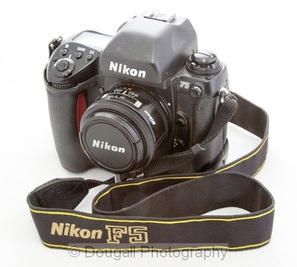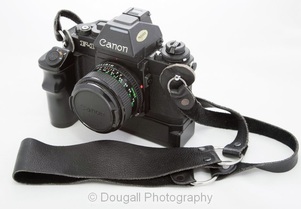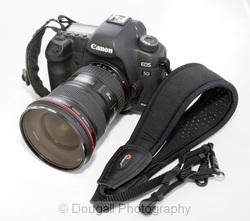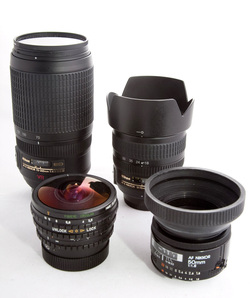
Most camera makers do give you a neck strap as part of the entry price into your new camera, but they spend more time designing the placement of their logo rather than ensuring you have a comfortable fit. These straps usually consist of a black nylon or canvas strap with hard edges and little "give" or flex to the material.
Back in the day, the straps were even worse as they were made of very thin nylon webbing with a movable (always in the wrong place) rubber shoulder pad. Thankfully, there a better choices today!

Years ago I gave up on manufacturers' straps and vowed that I would not provide free advertising of my cameras to potential thieves. I began replacing my uncomfortable corporate neck straps with wide, soft leather "field straps" made by Globus Inc, a company that doesn't seem to be around any more. These straps came in brown or black, had a wide, soft neck pad, gave a little when slung around the neck and had metal hardware. I purchased a number of these in the late 70's and still use them today on some of my cameras. The only downside is that they are made of such soft leather they don't stay on my shoulder. I have developed a habit of holding the strap part way up and pressing it against my body to hold it in place. I have done this for so long that I don't even notice anymore and the camera never moves as I walk.

When wouldn't I need a neck strap? When using a hand strap of course! I attach a Canon E-1 hand strap to all my cameras and then hook the neck strap to the E-1. When I am carrying a long telephoto for an extended period of time it is far easier to hang the camera and lens off of my hand rather than my neck. When I am doing this, I remove the neck strap (via the quick release) so it doesn't drag on the ground.
As the Lowe-pro strap has now been replaced with newer versions that are not as flexible for my liking, the new Custom SLR Split Camera Strap from B&H Photo may be a good replacement as it appears to be flexible, non-slip and complete with a removable neck pad.
If you're finding that your neck strap won't accommodate the weight of your camera and lens or it just isn't flexible enough, begin your hunt for the world's best camera neck strap (or hand strap) - it may just make it easier to carry your camera more comfortably for longer periods of time.




 RSS Feed
RSS Feed
